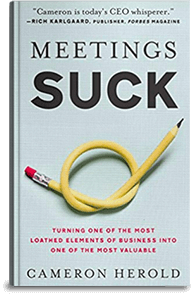One of the biggest questions that CEOs and other business leaders ask is, “What can I do to quickly engage my team around saving money now and do the same with profit?” It seems like a big, complicated question, but the answer is much easier than it seems. The best part is, it’ll take you 60 minutes or less! So how do you do it?
Give Them Post-Its
The first thing you want to do to engage your employees is to give them Post-It notes. Sounds odd, but it works and this is how:
Gather all of your employees in the boardroom and then give them each 10 Post-It notes. Ask them to write down specific ideas, one per Post-It, on what the company can do to save money, increase sales, and increase margin.
Good ideas take time, so be patient. Give your employees at least a full five minutes to come up with their ideas before you move on to the next step.
Share
Once all your employees have finished writing down their ideas, have each person stand up and read what they have written on their Post-It notes. Then, ask them to put them all up on the wall.
After all the notes are up on the wall, have your employees vote on them. You can vote by putting a tick mark at the bottom of the Post-It notes. The number of Post-It notes divided by the number of people equals the number of votes each person should get.
Eliminate and Implement
Once the voting is complete, count up the tick marks and eliminate the Post-It notes with zero or very low votes. Then, pick out the Post-It notes with the most votes and act on the ideas that are easy, fast to do, and cost little or nothing at all.
See? In less than an hour, ideas were found, voted on, and chosen to be used. Alone, you’d never have the variety of options you’d get this way and by allowing your employees to participate, they feel a lot more connected to the ideas.
“When employees are engaged, they are more likely to invest in the work they do which leads to a higher quality of work produced. Engaged organizations have double the rate of success compared to less engaged organizations” – Social Chorus
Your employees are going to be much more invested in the ideas this way because they feel as if their voices were heard. If they feel this way, they’ll work a lot harder to make the ideas come to life.
Do you have any other strategies that you use to gain ideas and/or engage your employees? Let us know in the comments below!
If you have questions or would like more information, I’d be happy to help. Please send an email, and my team will get in touch with you!
Editor’s Note: This post was originally published in August 2016 and has been edited for accuracy and comprehensiveness.
 Years ago, my friend and brilliant speaker,
Years ago, my friend and brilliant speaker,  The best potential employees aren’t looking for a job because they’ve already got one. That’s why you have to poach them.
The best potential employees aren’t looking for a job because they’ve already got one. That’s why you have to poach them.





